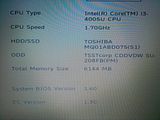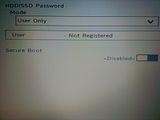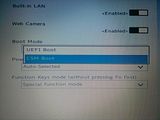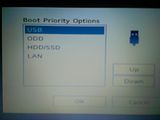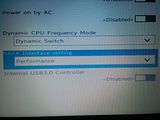New
#1
Windows 7 installation on Toshiba UEFI
Hey all,
I bought a new Toshiba L70-BST2NX1 laptop and I am trying to install Windows 7 (Home Premium 64-bit) on it using UEFI method, not dual boot with Windows 8.1, just Windows 7 all by itself. I got stuck early in the installation process.
Here is what I did:
- Disabled Secure Boot in UEFI setup
- Removed all partitions from HDD
- Began booting from Windows 7 DVD while UEFI is enabled
Having done that, on the screen I see "loading files" text and a white horizontal progress bar. Then the animated Windows startup logo appears with "Starting Windows" text, but then it freezes in the middle of the logo animation. This is where I am stuck.
I certainly want help getting me through the installation but I also have a number of questions.
- Does Windows 7 normally support this type of UEFI installation?
- If UEFI booting is disabled (CSM) on UEFI-capable machine, what functionality do I give up?
- If Windows 7 installation is performed with UEFI boot disabled (CSM), can UEFI booting be enabled again after the installation process is finished?
These are the instructions that Toshiba has, and they say to use CSM booting, but does that mean that UEFI Windows 7 is impossible on UEFI-capable Toshiba machines?
https://aps2.toshiba-tro.de/kb0/TSB2C03F80002R01.htm


 Quote
Quote
